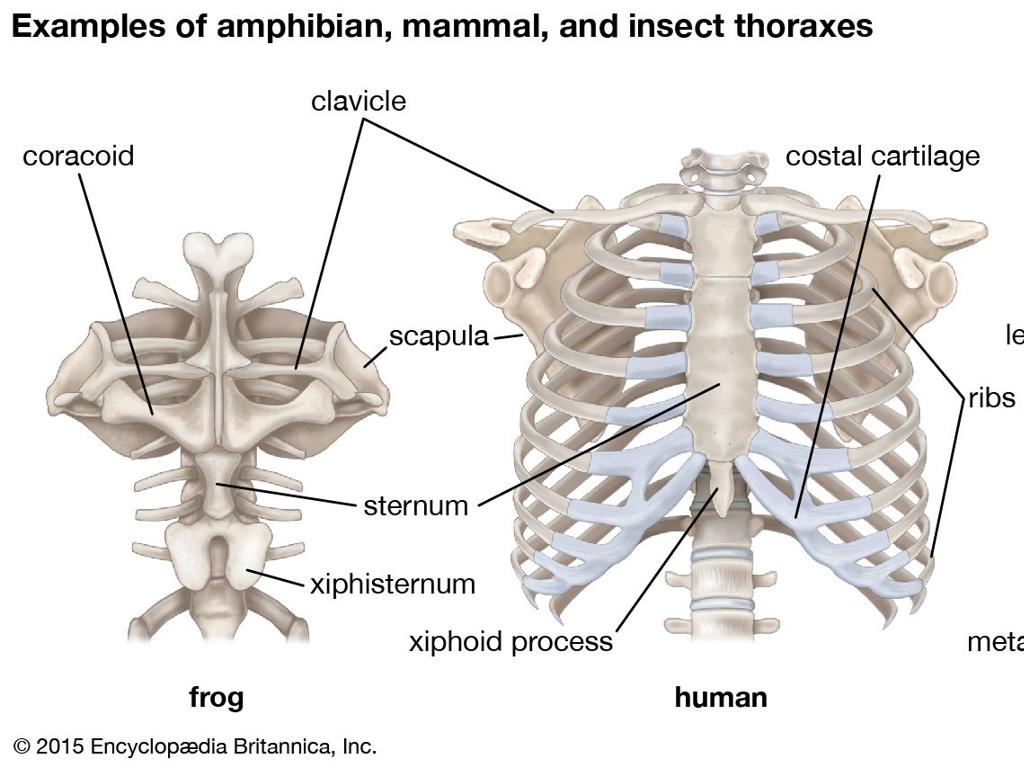Calculate The Averages Of Traits In A Population
Subject: Science
Grade: Eighth grade
Topic: Adaptations And Natural Selection
Please LOG IN to download the presentation. Access is available to registered users only.
View More Content
Adaptations, Natural Selection, and Population Traits
– Species adaptation to environments
– Adaptation examples: camouflaged insects, beak sizes in birds
– Natural selection’s role in evolution
– Survival of the fittest: favorable traits become more common
– Calculating trait averages
– Mean trait values show common characteristics
– Analyzing population adaptations
– How average traits indicate environmental adaptation
|
This slide introduces the concepts of adaptations and natural selection, setting the stage for understanding how these processes influence the traits within a population. Emphasize the importance of adaptations as a survival mechanism, using examples like camouflaged insects or birds with beaks adapted to their food sources. Explain natural selection as a key driver of evolution, where organisms with favorable traits are more likely to survive and reproduce. Today’s focus will be on calculating the average of traits in a population, which helps us understand which characteristics are most common and how they contribute to the species’ adaptation to their environment. Encourage students to think critically about how average traits can change over time due to environmental pressures.
Understanding Traits in Populations
– Define a biological trait
– A trait is a characteristic of an organism, like fur color or leaf shape.
– Examples of species-specific traits
– Peacock’s tail feathers, cactus spines, or elephant’s memory.
– Traits: Physical vs. Behavioral
– Physical traits are observable features; behavioral are actions or reactions.
– Calculating trait averages
|
This slide introduces the concept of traits within the context of adaptations and natural selection. A trait is any characteristic that can be passed from parent to offspring. Physical traits include things like fur color, plant leaf shape, or beak size, while behavioral traits encompass activities like migration patterns or feeding behaviors. Provide examples that are relevant and relatable to the students. Emphasize that understanding traits is crucial for studying how species adapt to their environments. The average of traits in a population can be calculated and used to predict future adaptations. Encourage students to think of traits they observe at home or in nature.
Variation in Traits Within a Population
– Traits vary in populations
– Individuals in a population have different characteristics, like height or beak size.
– Genetic diversity’s role
– Genetic diversity allows populations to adapt to changing environments and survive.
– Environmental impact on traits
– Factors like climate and food availability can influence the expression of traits.
– Calculating trait averages
|
This slide introduces the concept of trait variation within a population, which is a cornerstone of understanding natural selection and adaptation. Emphasize that no two individuals are exactly alike, and this variation is crucial for the survival of a species. Genetic diversity is the variety of genes within a population, and it’s important because it can lead to better adaptation and survival rates. Environmental factors can also affect how traits are expressed and which traits become more common in a population. Finally, explain how to calculate the average of a trait in a population, which can help students understand the concept of ‘average’ in a real-world biological context. Provide examples, such as the average height of a group of people or the average beak size of a bird population, to illustrate these points.
Natural Selection and Population Traits
– Natural selection process
– Organisms better adapted to their environment tend to survive and reproduce.
– ‘Survival of the fittest’ concept
– The phrase means the best-suited traits for survival get passed on more frequently.
– Influence on population traits
– Traits that offer a survival advantage become more common in the population over time.
– Calculating trait averages
– We can find the average of a trait by adding up all the values and dividing by the number of individuals.
|
This slide introduces the concept of natural selection and its impact on the traits of a population. Begin by explaining natural selection as a process where organisms that are better adapted to their environment have a higher chance of surviving and reproducing. Clarify that ‘survival of the fittest’ refers to the idea that traits that confer a survival advantage are more likely to be passed on to the next generation. Discuss how, over time, this process influences the traits within a population, leading to a higher frequency of advantageous traits. Finally, demonstrate how to calculate the average of a trait in a population, which is a key concept in understanding how traits are distributed within a group. Provide examples and encourage students to think of traits in animals and plants that might be influenced by natural selection.
Calculating Averages of Traits in Populations
– ‘Average’ in traits context
– Average refers to the most common form of a trait in a group.
– Steps to calculate trait average
– Add all trait values and divide by total number of individuals.
– Significance of averages in populations
– Averages help predict population changes and survival adaptations.
|
This slide introduces the concept of calculating the average of traits within a population, which is a key aspect of understanding adaptations and natural selection. Start by explaining that ‘average’ in this context refers to the trait that appears most frequently or is most typical in a population. Then, guide students through the process of calculating the average by summing up the values of a particular trait across individuals and dividing by the total number of individuals. Emphasize the importance of this calculation in predicting how populations may change over time and how certain traits can become more common as they contribute to survival and reproduction. Provide examples, such as average beak size in a bird population, to illustrate these concepts.
Hands-On Example: Calculating Trait Averages
– Collect data on a population trait
– Measure a trait like plant height in a garden
– Calculate the average step by step
– Add all measurements together, then divide by the number of plants
– Interpret the average’s significance
– Understand what the average tells about the population
– Discuss variation and adaptation
– Relate trait averages to survival and reproduction
|
This slide is designed for a hands-on activity where students will actively engage in collecting data on a specific trait within a population, such as the height of plants in a school garden. They will then use this data to calculate the average height by adding all the measurements and dividing by the total number of plants. Students will interpret the results to understand what the average height indicates about the population’s health and how it may affect survival and reproduction. Discuss how variations in traits can lead to adaptations within a population over time. This activity will help students grasp the concept of averages and their importance in understanding populations in the context of natural selection and adaptations.
Activity: Measure and Calculate Trait Averages
– Introduction to classroom activity
– Measure a trait in organisms
– Each group measures the same trait across different samples
– Calculate the trait’s average
– Add all measurements and divide by the number of samples
– Present findings to class
– Share the average and discuss variation within the population
|
This activity is designed to give students hands-on experience with the concept of averaging traits in a population, an essential part of understanding adaptations and natural selection. Divide the class into small groups and assign each group a set of organisms or data on a specific trait, such as plant height or beak length. Provide tools for measurement and ensure each group understands how to accurately measure their assigned trait. After measurements, guide them through the calculation of the average for their trait. Each group will then prepare a short presentation of their findings, focusing on the average and any observed variations. Encourage discussions on how these variations could affect the organisms’ survival and reproduction in the context of natural selection. Possible activities could include measuring leaf sizes, insect wing lengths, or using provided data sets for organisms not present in the classroom.
Conclusion: Traits, Natural Selection & Adaptations
– Recap trait average calculation
– Summarize the process of finding the mean trait value in a population.
– Link to natural selection
– Calculations show which traits are favored by natural selection.
– Adaptations’ role in survival
– Adaptations increase chances of survival and reproduction.
– Significance in evolutionary biology
|
This slide wraps up our discussion on calculating the averages of traits within a population and how this relates to natural selection and adaptations. By understanding the average traits, students can infer which characteristics are advantageous and thus more likely to be passed on to future generations. This is a key concept in natural selection, where organisms with favorable traits are more likely to survive and reproduce. Adaptations that enhance survival are crucial, as they can lead to speciation and influence the direction of evolution. Encourage students to think of real-world examples where certain traits have become more common in a population due to these principles.
Class Activity: Trait Average Calculation
– Measure a trait in a sample group
– Calculate the trait’s average
Add all measurements together, divide by the number of samples
– Discuss adaptation significance
How does the average trait help the population survive?
– Group collaboration and presentation
|
In this interactive group activity, students will engage in hands-on learning by measuring a specific trait within a sample population. This could be the height of plants or the length of insect wings. Each group will then calculate the average of their collected data. The purpose is to understand how the average of a trait within a population can indicate the level of adaptation to its environment. For example, taller plants in a forest might suggest an adaptation to reach sunlight. After calculations, groups will discuss and present their findings, fostering a deeper understanding of natural selection and the importance of statistical averages in scientific studies. Provide guidance on how to accurately measure and calculate averages, and ensure that each group understands the concept of adaptation. Suggest different traits for each group to avoid data overlap and encourage a variety of discussions.





